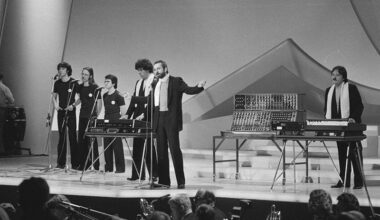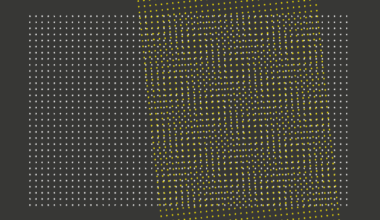Opening in the late 80s, The Brain on London’s Wardour Street championed pretty much an entire generation of DJs and electronic live acts. Co-founder Sean Mclusky tells the club’s incredible tale

As any self-respecting northerner will tell you, London was behind the wave when it came to the acid house revolution. When the capital did finally get its first full-time, post-rave electronic music club in early 1989, it’d change the face of clubbing, and live music, forever.
The venue was at 11 Wardour Street, on the edge of Soho, an intensely busy part of the West End close to Leicester Square and just off Chinatown. The Brain ran for seven nights a week, with room for a couple of hundred people, and played host to sets from many artists who would go on to shape numerous subsequent musical revolutions, among them Orbital, Leftfield, Moby, Mixmaster Morris, Norman Cook, Goldie, Graeme Park and Andrew Weatherall.
It was the brainchild (excuse the pun) of two men: Sean McLusky and Mark “Wigan” Williams. McLusky had known Wigan from around the club scene and they had already been putting on nights together at a basement bar on Cork Street in Mayfair.
“Those were the days when you could just walk in off the street to failing clubs in the West End and the owner would let you have Saturday nights to promote your own events,” recalls Sean. “The venue we turned into The Brain was one of those. I never used to pass a doorway in Soho without going in to see what was there, I simply saw a sign that said the Apollo Club, went up the stairs and asked the owner if I could do a party there. We put 200 people in there a couple of weeks later for a one-off. I then asked them if we could do it every night, change the name and redecorate.”
Sean recalls that the venue was spread over two floors above a restaurant, and both spaces were small. There was a long bar on the first floor, and a dancefloor and small bar on the second floor, with access to a roof garden of sorts. The Brain was a hit from day one, always packed with queues down the road, thanks to a combination of its relatively small capacity and the booming lust for clubbing that was sweeping the capital at the time.
“Its size really helped it to be always heaving,” admits Sean, “plus people were going out every night of the week back in 1989. We quickly became the social club of the scene as we were open seven nights a week. It had a members’ club feel as we always had regulars there. It was like the Colony Club for the acid house scene.”
When it opened, the main offering at The Brain Club was house music, capitalising on the fact that although there were other nights about, it was the only venue synonymous with the sound on a full time basis. But there were exceptions to the rule too.
“The house sound had exploded the year before across London and the Home Counties, but we were the only venue playing house most nights of the week,” says Sean. “There was a regular funk/disco night that Roy The Roach headed up when we first started, but house was new and rare groove still ruled in some quarters. We also did the first retro hip hop night in London. The boys who later became the designers YMC had started importing old stock trainers from the USA and they wanted to build the scene to sell them. We had breakdancers in Adidas Gazelles everywhere.”
Thursdays saw Gilles Peterson, the aforementioned Roy The Roach and Patrick Forge fusing funk, disco and jazz with the house template. Saturdays had a more techno feel, as Steve Bicknell and Billy Nasty presented their Exploding Plastic Inevitable night. But perhaps most influential of all was the regular Wednesday night, Live At The Brain, which formed the first roots of the live electronica scene, with Haçienda resident Graeme Park joining a host of live acts.
“I was from a live music background having been in bands in the first half of the 80s,” says Sean, who played drums in the chartbusting JoBoxers. “I wanted to program live music, but I wanted to keep it contemporary so I only put on electronic acts. The highlights were people like Orbital, A Guy Called Gerald, Ramjac, Nexus 21, Mr Monday, Audio One, Adamski and my favourite, Sheep On Drugs.”
Sean recorded all the live performances and released two live albums on Brainiak Records, interspersed with conversations with punters. Another expansion saw them exporting the club to New York (where they crossed the path of notorious Club Kid killer, Michael Alig) and then to Reykjavik with The Happy Mondays, among others.
“The Mondays’ live show in Iceland was a riot,” remembers Sean, “but the club night we did on the Friday was closed down by the police, so we broke into a warehouse and kept the party going all night. We did get a new venue for the Saturday night after going on national TV saying we were there to destabilise their government.”
Back in London, The Brain became famous enough to attract pop stars and Hollywood royalty like Brigitte Nielson and Matt Dillon.
“George Michael used to come down with his boyfriend and dance with girls to put us off the scent,” laughs Sean. “As if we didn’t know!”
But he’s proud of the fact that it was the club of choice for the scene. The Stone Roses drank there whenever they were in London, and the likes of Bobby Gillespie, Boy George, The Chemical Brothers, Paul Oakenfold, Danny Rampling, Underworld, Bomb The Bass, Neneh Cherry, and Dave Dorrell of M/A/R/R/S all passed through the doors of The Brain.
The club eventually came to an acrimonious end. “We were having too much of a good time and not watching our backs,” says Sean, leaving us to read between the lines. One day they received a letter from the owners saying we were no longer welcome. Needless to say, within six months the original Brain had closed altogether.
One chapter in music had closed, but using 11 Wardour Street as their springboard, a myriad of different electronic music styles and innovations were about to fly.





